A white-breasted nuthatch, Sitta carolensis, is happy to have a sunflower seed I put out last week. © BCP 2011
Must be doing something right in my quest to have a bird- and butterfly-friendly yard. It’s party time in my backyard this year — at least if you happen to be either a bird or a squirrel. But how long can I continue to put out the buffet? These guys are going through seed like they’ve never eaten before!
It’s so entertaining — especially watching the squirrels trying to get food out of my “Squirrel Buster,” that even if it weren’t helping the birds, it would be money well spent.
Today is International Migratory Bird Day, with a local celebration being held at Tommy Thomson Park (AKA the Leslie Street Spit.) Don’t think I will be able to make it to that event, but in honour of the day, I am posting a picture of a migratory bird that arrived in my yard last week, just like magic. I have never seen a brown thrasher, Toxostoma rufum, anywhere around the residential area where I live, so this was more than a surprise. (Lucky duck, er, thrasher, he got to spend the winter in Texas, if I’m reading my bird guides correctly.)
I tried very hard to get a clear shot of the thrasher, but he was a devil to photograph. Very, very skittish. I finally had to settle for a peek-a-boo shot of him, below, scratching through the dusty duff in my yard, searching for berries, insects, nuts and seeds — and whatever else he could get that long curved beak of his on!
The brown thrasher is a very large member of the Mimidae family, the family of mimics that also includes the northern mockingbird, making a bit of a comeback in our area. (Recently in the Don Valley, I heard a mockingbird going through this long, laughable repertoire repeatedly. The mockingbird’s astonishing range of vocalizations have to be heard to be believed. You can hear a sample here.)
At the top of this post, migratory bird day notwithstanding, I’ve included a photo of a bird that stuck around all year — the white-breasted nuthatch, Sitta carolensis, above. This bird’s call has been ringing out through the trees in my backyard recently. You can hear his piercing, unmistakeable call here.
This little fellow came by to get some sunflower seeds. . . . I felt like telling him to be quick. Grab one before the phalanx of squirrels back there get them all. As you can see, he was successful.
I’ve filled up the feeder again. I wonder what bird will arrive next?
-
-
A brown thrasher, Toxostoma rufum, plays peek-a-boo in my yard last week. © BCP 2011
© BCP 2011


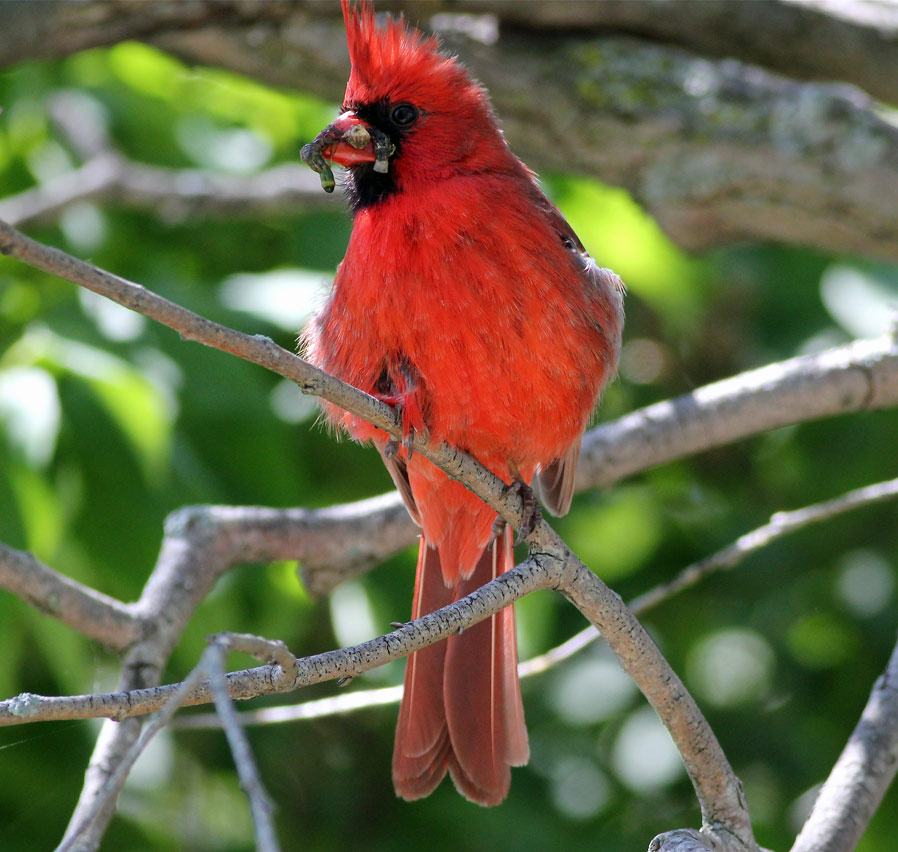
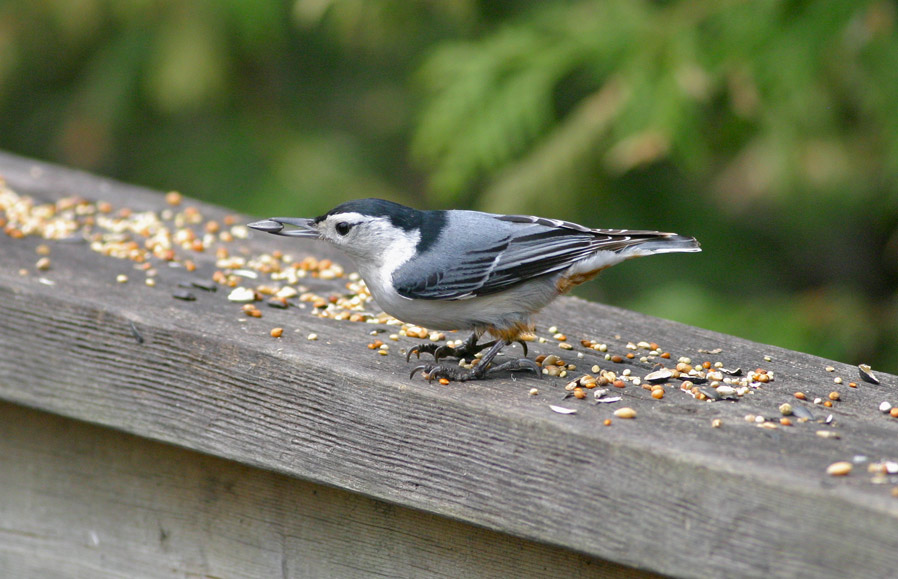
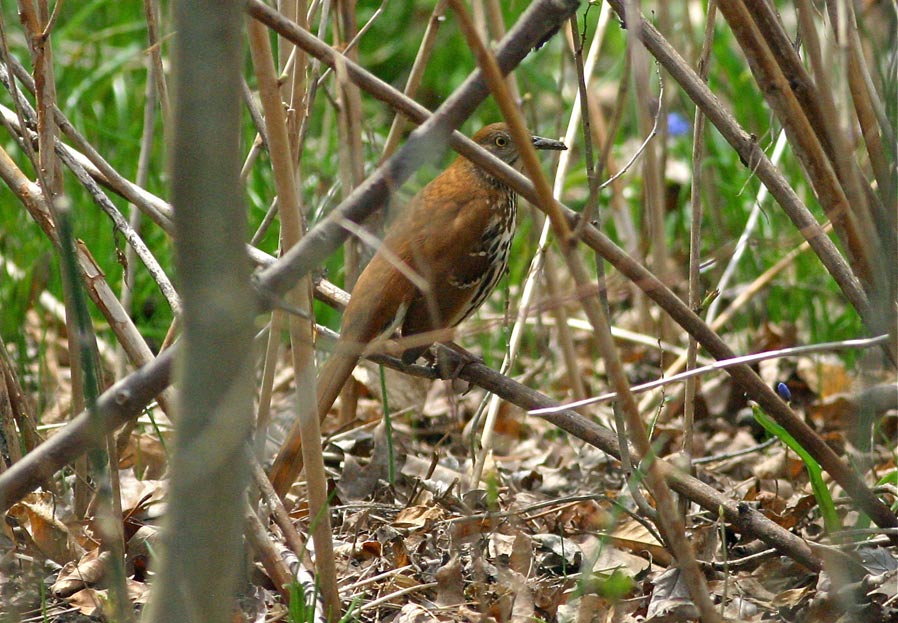
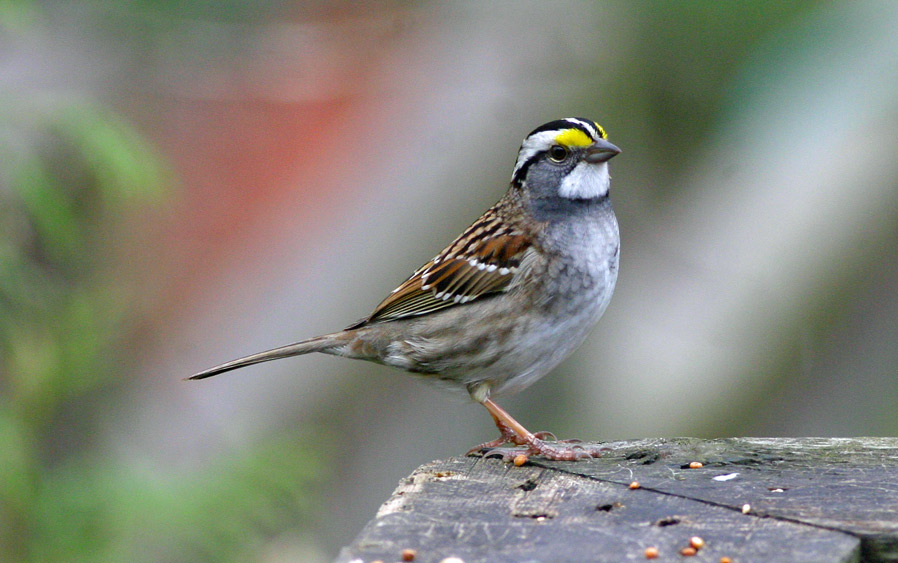
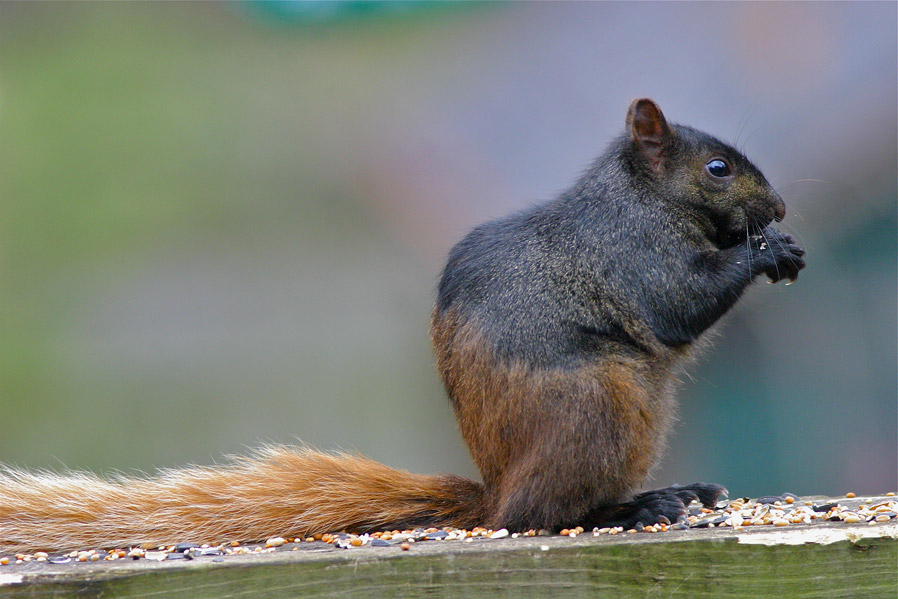
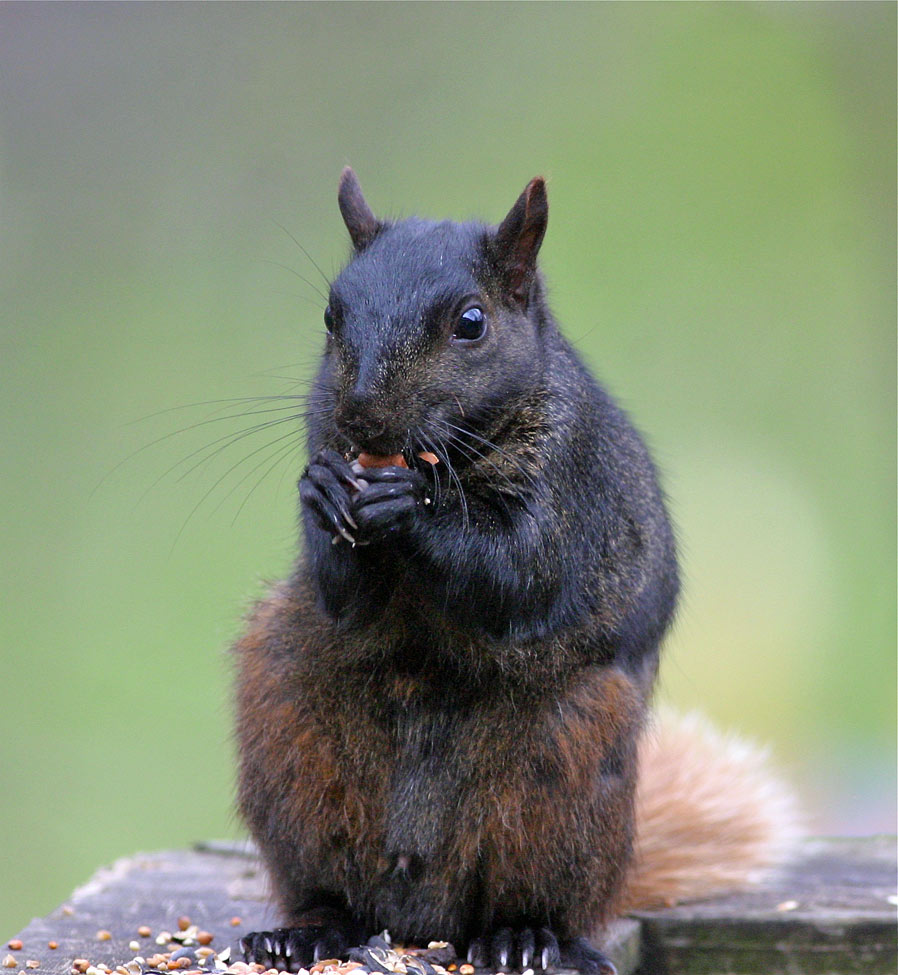

no comments